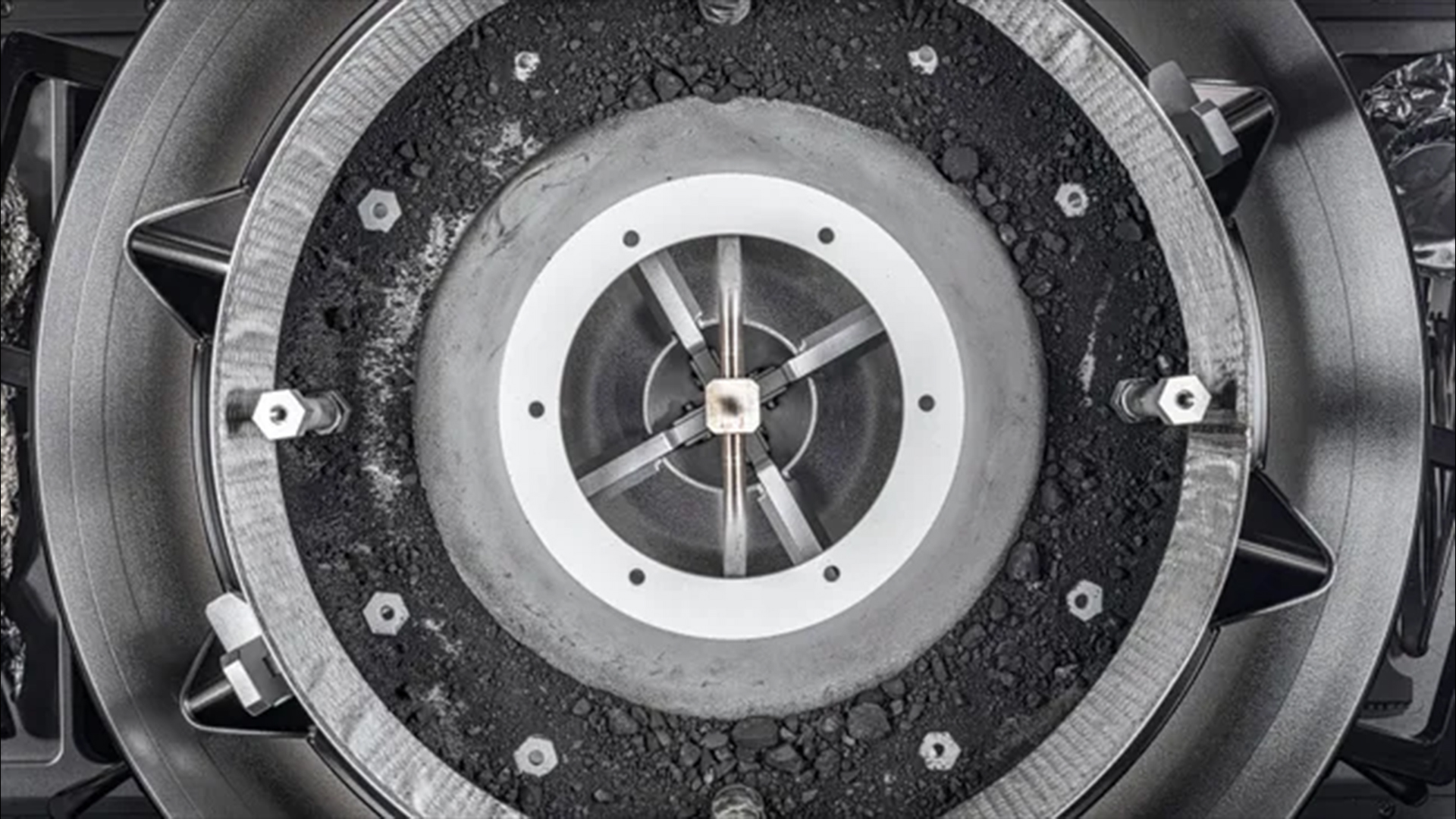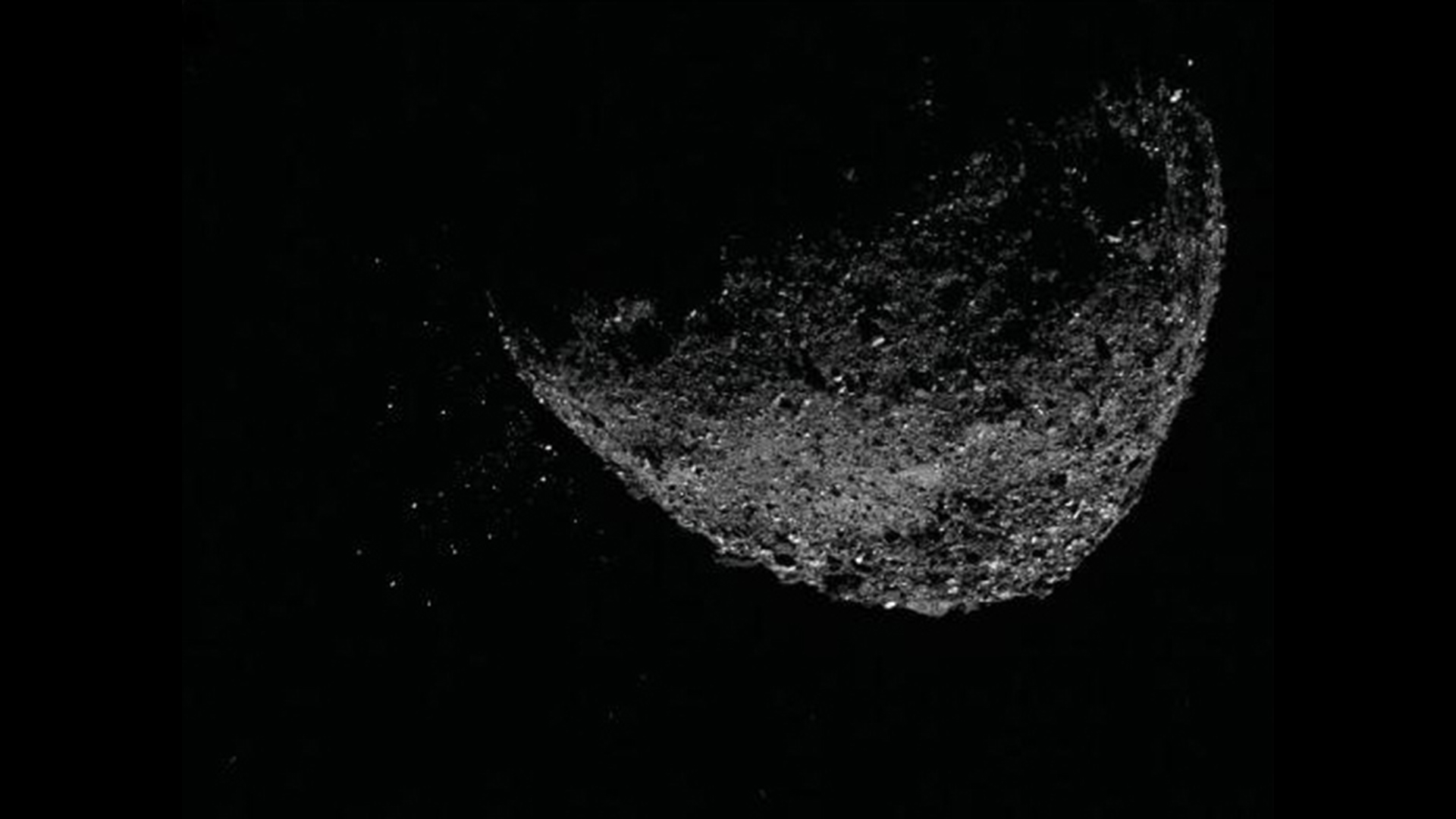'Potentially hazardous' asteroid Bennu contains the building blocks of life and minerals unseen on Earth, scientists reveal in 1st comprehensive analysis
Scientists shared the first comprehensive science results from NASA's OSIRIS-REx asteroid-sampling mission at the Lunar and Planetary Science Conference, revealing the out-of-this-world makeup of asteroid Bennu.

TEXAS — Nearly four years after NASA's OSIRIS-Rex spacecraft collected a sample from an asteroid, scientists are finally revealing the intriguing composition of the space rock.
Among them, the near-Earth asteroid, known as Bennu, contains a surprising reservoir of a mineral called magnesium phosphate. These bright-white particles sprinkled in a sea of Bennu's dark rocks is a rare find in astromaterials, scientists say.
"It's no surprise that we initially thought this might be a contaminant," said Jessica Barnes, an assistant professor at the Lunar and Planetary Laboratory (LPL) who's leading the phosphate analysis in the returned sample.
Speaking at the Lunar and Planetary Science Conference (LPSC) in Texas and online last week, Barnes said there are no good chemical analogues of the mineral on Earth, either because it is too fragile to survive the fall to Earth or vanishes soon after. Its presence in Bennu's sample can be used to infer different episodes of geologic activity on Bennu's parent body, she said.
The samples also show the widespread presence of glycine, the simplest amino acid and a crucial ingredient of proteins, as well as other water-bearing minerals, including carbonates, sulfites, olivine and magnetite, all of which are tangible evidence that Bennu's parent body witnessed multiple water-related episodes before its fragments coalesced into Bennu.
Other scientists studying the extraterrestrial bounty found abundant water-altered compounds called phyllosilicates, as well as a rich collection of other organic and hydrated minerals. Phyllosilicates, which are structurally bound to water in meteorites, may have been the cradles for organics and water that scientists suspect were delivered to Earth early in its history.
Related: NASA's most wanted: The 5 most dangerous asteroids in the solar system
Get the world’s most fascinating discoveries delivered straight to your inbox.
'A beautiful sample'
The sample, scooped from Bennu in 2020 by NASA's OSIRIS-REx mission, returned to Earth in a protected capsule on Sept. 24, 2023. A day later, it was delivered for analysis at NASA's Johnson Space Center (JSC) in Houston, where a "tiger team" of scientists began a preliminary investigation of the material that had leaked outside the spacecraft's sample collector. (Two pesky screws on the container lid prevented access to the bulk of the collected sample until January, which is when scientists officially cataloged 4.29 ounces, or 121.6 grams, of collected material — double the initial prediction.)
In a fleet of talks at the LPSC, the mission team reported that the stones cataloged so far also sport a variety of textures, hydrated minerals and evidence for space weathering, as is expected from an airless, eons-old rock.
"It's a beautiful sample," said Sara Russell, a planetary scientist at the Natural History Museum in London who analyzed a small fragment of the sample. "Also, I would say it's not quite like any meteorite in our collection."
The most pristine asteroid sample ever
Unlike most meteorites, whose surfaces are altered by years-long exposure to Earth's air by the time they are found, pieces of Bennu are the most pristine space rocks scientists have ever held.
"I cannot tell you how refreshing it is to see some samples where everything isn't altered to sulfates and all kinds of muck," said team member Tim McCoy, a curator of meteorites at the Smithsonian's National Museum of Natural History in Washington, D.C., which received a sample of the asteroid to analyze last November. "You're seeing it literally the day it fell — it is remarkable to see something that fresh."
Many of the cataloged rocks from Bennu are "hummocky boulders" with rough, "sandpaper-like texture," said team member Andrew Ryan, a research scientist at LPL at the University of Arizona. A 1.4-inch-wide (3.5 centimeters), 0.23-ounce (6.6 grams) rock is "by far our largest booty from the surface of Bennu," he said, gesturing toward fresh 3D scans of the rock taken at the curation lab at JSC.
Most measured minerals confirm multiple predictions made from remote sensing data collected from OSRISIS-REx as it approached Bennu. "We got it right with the remote sensing," said Harold Connolly, a geologist at Rowan University in New Jersey, "and that feeds directly into how we are analyzing the sample and testing our hypotheses."
So far, the analysis has been consistent with the leading theory that Bennu broke off from a much larger asteroid about 2 billion to 700 million years ago. For instance, the latest analysis shows Bennu's rocks littered with impact-related breccias, which are rock fragments loosely held together like pebbles in concrete.
"These breccias probably didn't form on Bennu," said McCoy, who's leading the research on these features. "They formed on the parent asteroid and then in of themselves became boulders that were incorporated into Bennu."
It is still unclear precisely when they formed.
"We're still in the very early days of this very meticulous work," McCoy said. "There's a lot we don't know."

Sharmila Kuthunur is an independent space journalist based in Bengaluru, India. Her work has also appeared in Scientific American, Science, Astronomy and Space.com, among other publications. She holds a master's degree in journalism from Northeastern University in Boston. Follow her on BlueSky @skuthunur.bsky.social




